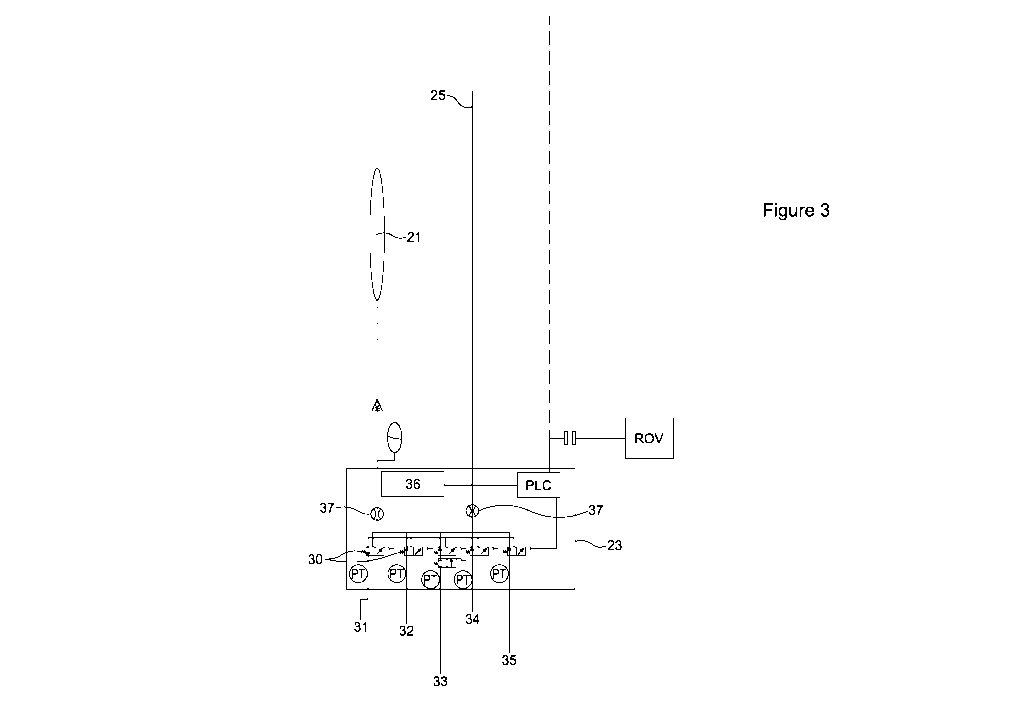Some of the information on this Web page has been provided by external sources. The Government of Canada is not responsible for the accuracy, reliability or currency of the information supplied by external sources. Users wishing to rely upon this information should consult directly with the source of the information. Content provided by external sources is not subject to official languages, privacy and accessibility requirements.
Any discrepancies in the text and image of the Claims and Abstract are due to differing posting times. Text of the Claims and Abstract are posted:
| (12) Patent Application: | (11) CA 3068549 |
|---|---|
| (54) English Title: | TUBING HANGER INSTALLATION TOOL |
| (54) French Title: | OUTIL D'INSTALLATION DE DISPOSITIF DE SUSPENSION DE TUBAGE |
| Status: | Examination |
| (51) International Patent Classification (IPC): |
|
|---|---|
| (72) Inventors : |
|
| (73) Owners : |
|
| (71) Applicants : |
|
| (74) Agent: | MARKS & CLERK |
| (74) Associate agent: | |
| (45) Issued: | |
| (86) PCT Filing Date: | 2018-06-29 |
| (87) Open to Public Inspection: | 2019-01-03 |
| Examination requested: | 2022-04-27 |
| Availability of licence: | N/A |
| Dedicated to the Public: | N/A |
| (25) Language of filing: | English |
| Patent Cooperation Treaty (PCT): | Yes |
|---|---|
| (86) PCT Filing Number: | PCT/NO2018/050173 |
| (87) International Publication Number: | WO 2019004842 |
| (85) National Entry: | 2019-12-27 |
| (30) Application Priority Data: | ||||||
|---|---|---|---|---|---|---|
|
A system for hydraulically controlling a subsea device, the system comprising a compensator provided within a cavity of a well system, a hydraulic connection between the compensator and the subsea device, a pressure regulator arranged to regulate the hydraulic pressure provided to the subsea device and a ventilation tool for releasing pressure at the subsea device.
La présente invention concerne un système de commande hydraulique d'un dispositif sous-marin, le système comprenant un compensateur prévu à l'intérieur d'une cavité d'un système de puits, un raccord hydraulique entre le compensateur et le dispositif sous-marin, un régulateur de pression agencé pour réguler la pression hydraulique fournie au dispositif sous-marin et un outil de ventilation pour réduire la pression au niveau du dispositif sous-marin.
Note: Claims are shown in the official language in which they were submitted.
Note: Descriptions are shown in the official language in which they were submitted.

2024-08-01:As part of the Next Generation Patents (NGP) transition, the Canadian Patents Database (CPD) now contains a more detailed Event History, which replicates the Event Log of our new back-office solution.
Please note that "Inactive:" events refers to events no longer in use in our new back-office solution.
For a clearer understanding of the status of the application/patent presented on this page, the site Disclaimer , as well as the definitions for Patent , Event History , Maintenance Fee and Payment History should be consulted.
| Description | Date |
|---|---|
| Interview performed | 2024-08-28 |
| Examiner's Interview | 2024-08-28 |
| Amendment Received - Voluntary Amendment | 2024-08-21 |
| Amendment Received - Voluntary Amendment | 2024-08-21 |
| Amendment Received - Voluntary Amendment | 2024-08-21 |
| Amendment Received - Response to Examiner's Requisition | 2023-11-03 |
| Amendment Received - Voluntary Amendment | 2023-11-03 |
| Amendment Received - Voluntary Amendment | 2023-08-03 |
| Examiner's Report | 2023-07-07 |
| Inactive: Report - No QC | 2023-06-12 |
| Letter Sent | 2022-06-01 |
| Request for Examination Requirements Determined Compliant | 2022-04-27 |
| Request for Examination Received | 2022-04-27 |
| All Requirements for Examination Determined Compliant | 2022-04-27 |
| Common Representative Appointed | 2020-11-07 |
| Letter Sent | 2020-06-29 |
| Inactive: Single transfer | 2020-06-04 |
| Inactive: Cover page published | 2020-02-12 |
| Letter sent | 2020-01-27 |
| Application Received - PCT | 2020-01-21 |
| Inactive: First IPC assigned | 2020-01-21 |
| Inactive: IPC assigned | 2020-01-21 |
| Inactive: IPC assigned | 2020-01-21 |
| Inactive: IPC assigned | 2020-01-21 |
| Request for Priority Received | 2020-01-21 |
| Priority Claim Requirements Determined Compliant | 2020-01-21 |
| National Entry Requirements Determined Compliant | 2019-12-27 |
| Application Published (Open to Public Inspection) | 2019-01-03 |
There is no abandonment history.
The last payment was received on 2023-11-07
Note : If the full payment has not been received on or before the date indicated, a further fee may be required which may be one of the following
Please refer to the CIPO Patent Fees web page to see all current fee amounts.
| Fee Type | Anniversary Year | Due Date | Paid Date |
|---|---|---|---|
| MF (application, 2nd anniv.) - standard | 02 | 2020-06-29 | 2019-12-27 |
| Basic national fee - standard | 2019-12-27 | 2019-12-27 | |
| Registration of a document | 2020-06-04 | ||
| MF (application, 3rd anniv.) - standard | 03 | 2021-06-29 | 2021-06-01 |
| Request for examination - standard | 2023-06-29 | 2022-04-27 | |
| MF (application, 4th anniv.) - standard | 04 | 2022-06-29 | 2022-06-03 |
| MF (application, 5th anniv.) - standard | 05 | 2023-06-29 | 2023-06-01 |
| MF (application, 6th anniv.) - standard | 06 | 2024-07-02 | 2023-11-07 |
Note: Records showing the ownership history in alphabetical order.
| Current Owners on Record |
|---|
| EQUINOR ENERGY AS |
| Past Owners on Record |
|---|
| MORTEN AGA |